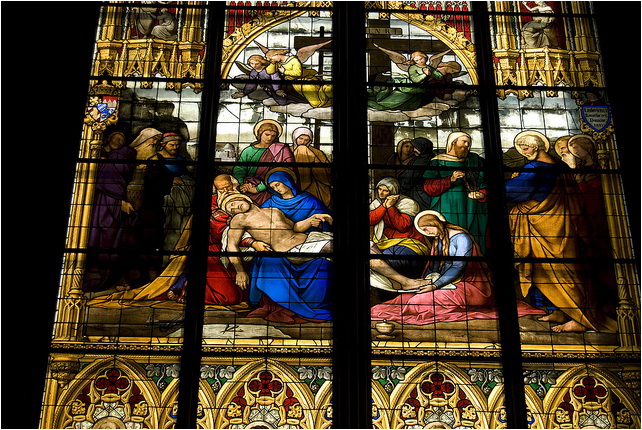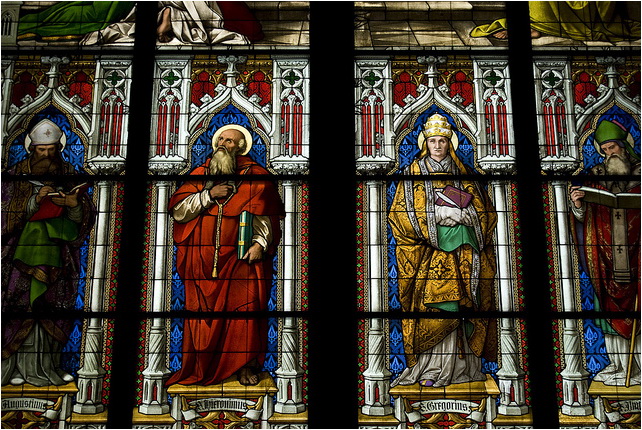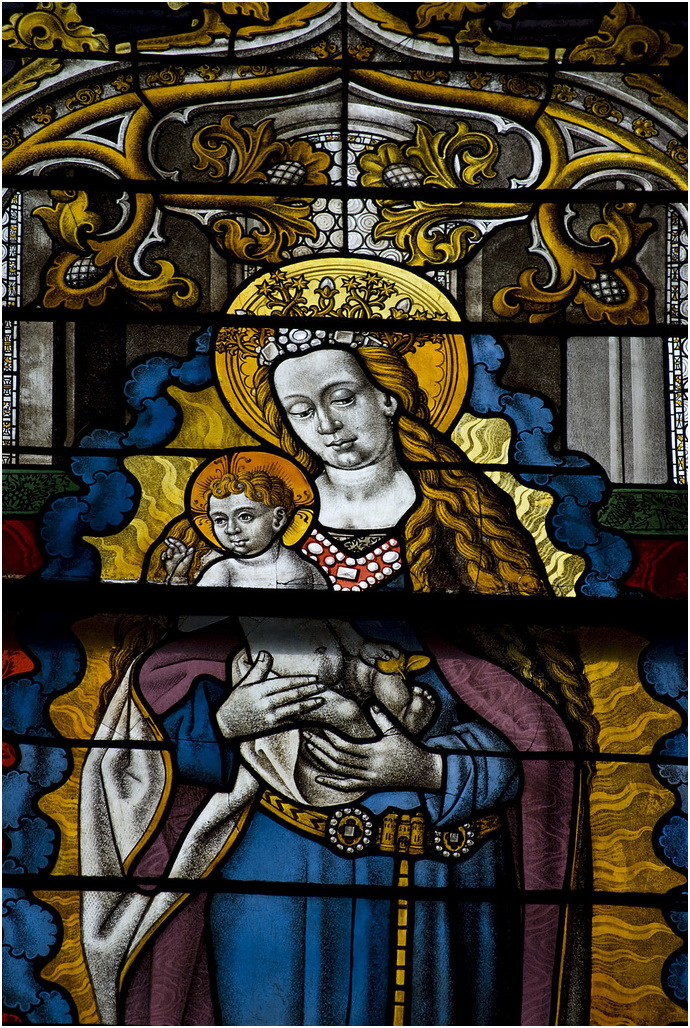 Cologne
Cathedral - Stained glass Cologne
Cathedral - Stained glass
Among the
windows made originally for the cathedral are several in
the choir chapels, a large cycle of kings in the
clerestory and several in the north nave
aisle.
Original
glass, notably from the triforium and choir chapels, was
removed in the 18th century in the course of a
redecoration program that replaced colored windows with
white glass.
The five
windows of the original south aisle of the nave were also
removed at an unknown date. With the renewed interest in Gothic art
during the 19th century, medieval glass from several
secularized Cologne parish and monastic churches was
incorporated into the glazing of the cathedral, mainly in
the north transept and sacristy.
The original decor can be partially reconstructed with the help of drawings made by
Sulpiz Boisserée.
 The
burial of Archbishop Konrad von Hochstaden in the axial chapel in 1261 or shortly after gives
an approximate date for the ‘Bible window’ there.
The
burial of Archbishop Konrad von Hochstaden in the axial chapel in 1261 or shortly after gives
an approximate date for the ‘Bible window’ there.
In many windows coats of arms help both to identify
their patron and to date the glass: for example, the arms of Heinrich von Virneburg in the cycle
of kings in the clerestory help to date them to his archiepiscopate between 1304 –
1332.
Documents provide precise dates and names of the
patrons of the five north transept windows. Among the early glass the two ‘Bible windows’
are particularly important.
The one in the axial chapel of the Three
Kings is the oldest glass in the cathedral, and the earliest
preserved ‘Bible window’ in Germany. The second, originally from the Dominican
church and now in the St Stephen Chapel, reflects the
influence of French court painting.
 The most important of the later
windows have been associated with such well-known Cologne
artists as the Master of St Veronica, the Master of the
Holy Kinship, the Master of St Severin, Bartholomäus Bruyn
the elder and those of the school of Stefan
Lochner. The most important of the later
windows have been associated with such well-known Cologne
artists as the Master of St Veronica, the Master of the
Holy Kinship, the Master of St Severin, Bartholomäus Bruyn
the elder and those of the school of Stefan
Lochner.
It is widely
assumed that this later glass was designed by one artist and
executed by others, so that the famous Cologne painters
themselves may have been responsible for some of the
designs.
The comprehensive iconographic program has been
interpreted somewhat controversially by Rode as representing the History of Salvation, depicted
typologically with themes representing the three periods of history.
Thus the period ante legem is represented by
Christ’s genealogy, as seen in the kings of the clerestory windows; the period sub lege is
depicted in the axial chapel of the choir in scenes of Christ’s life; and the period sub gratia
is depicted in the other choir chapels, in scenes from the lives of saints.
A typological view of history is also worked out
in more detail in the two ‘Bible windows’, where scenes of Christ’s life are related to Old
Testament events. The depiction of Christ’s ancestors as kings, and the prominence of the scene
of the Adoration of the Magi in the axial window of the clerestory, have been associated with
the importance of CologneCathedral as the cathedral of the Three Kings
|

